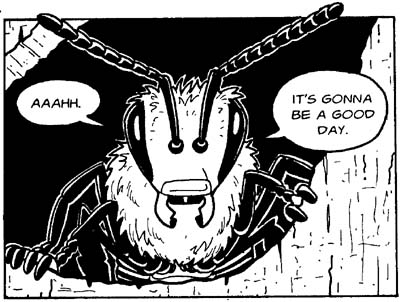
I just ran across Jay Hosler’s Clan Apis comic book. I’m not a bio kind of guy, so I can’t comment on the accuracy of either the drawings or the science embedded in the story, but both seem spot on. Hosler’s artwork treats the bees with loving detail, while maintaining a pleasant and readable style that hints at manga. The book follows the life of a single bee, Nyuki, touching on her life cycle and the structure of the hive as a whole. A story brilliantly told, with an admirable blend of science and humor.
Clan Apis also receives extensive treatment on Hosler’s website, including a section-by section treatment of the story and the science. Really nice stuff.
This also reminds me of the nascent work of the Small Science Collective, a group of folks (some of whom I happen to know) who create downloadable “mini-zines” with science stories. The idea here is much more of a guerilla tactic: make the comics available for free! (Much like the reprehensible Chick tracts that litter far too many of our nation’s public transportation systems.
As a long-time reader of comics and comic books, I love seeing them used like this!



